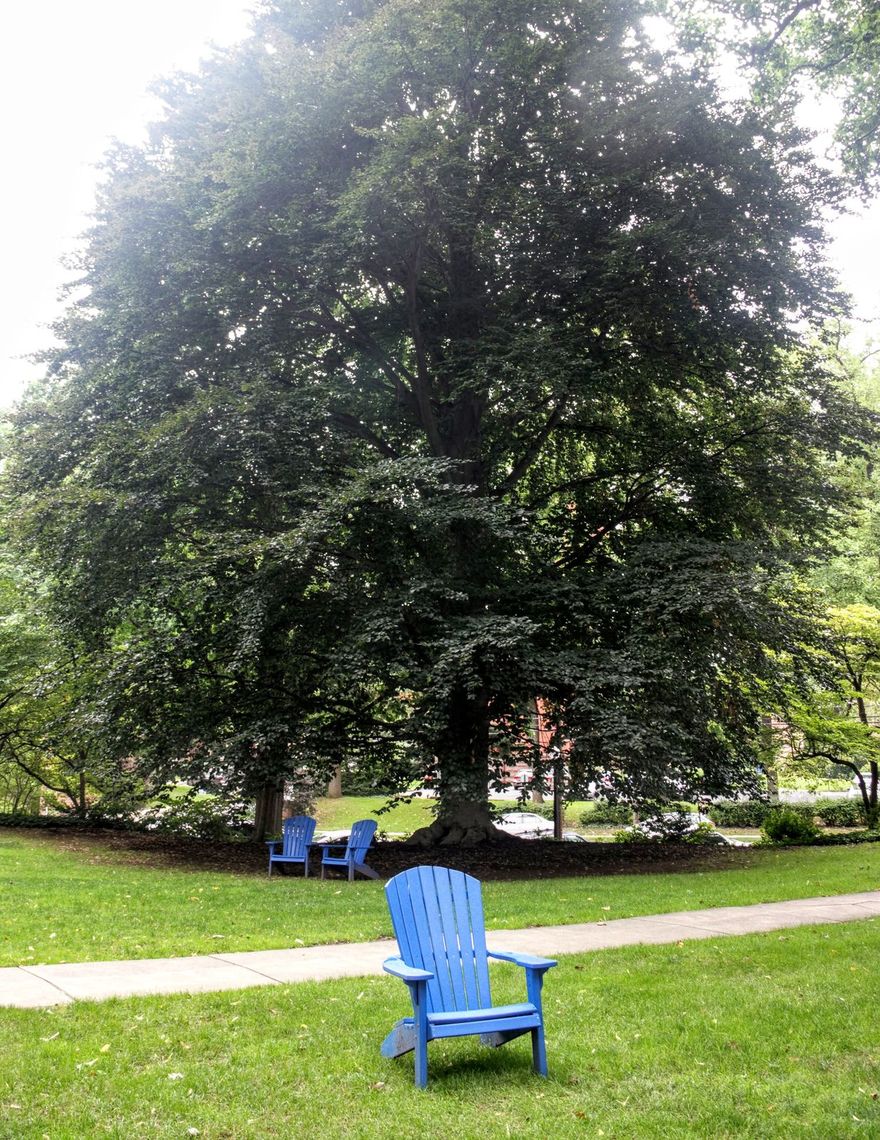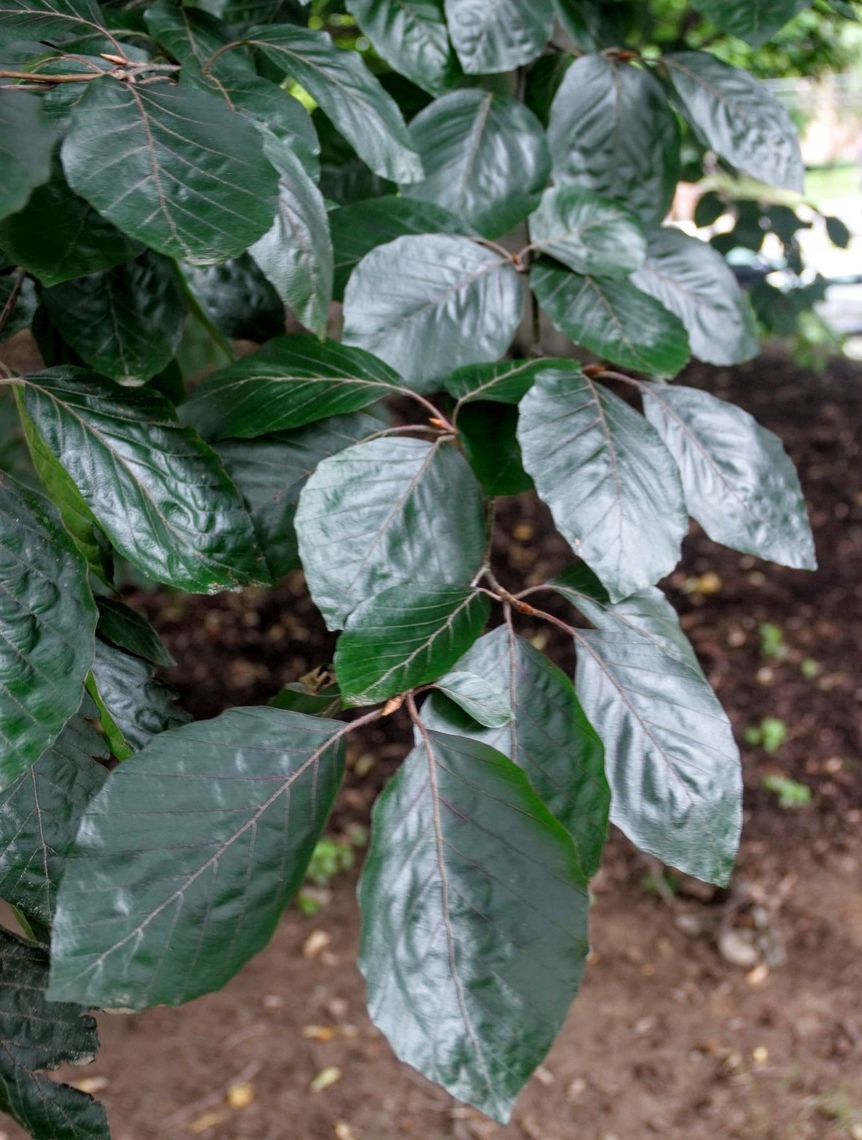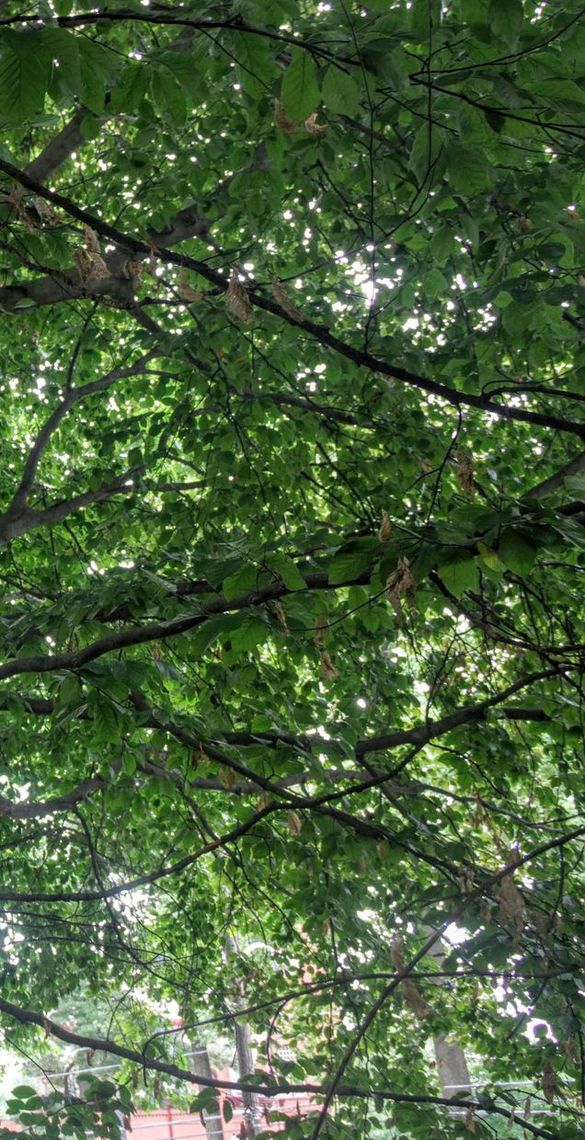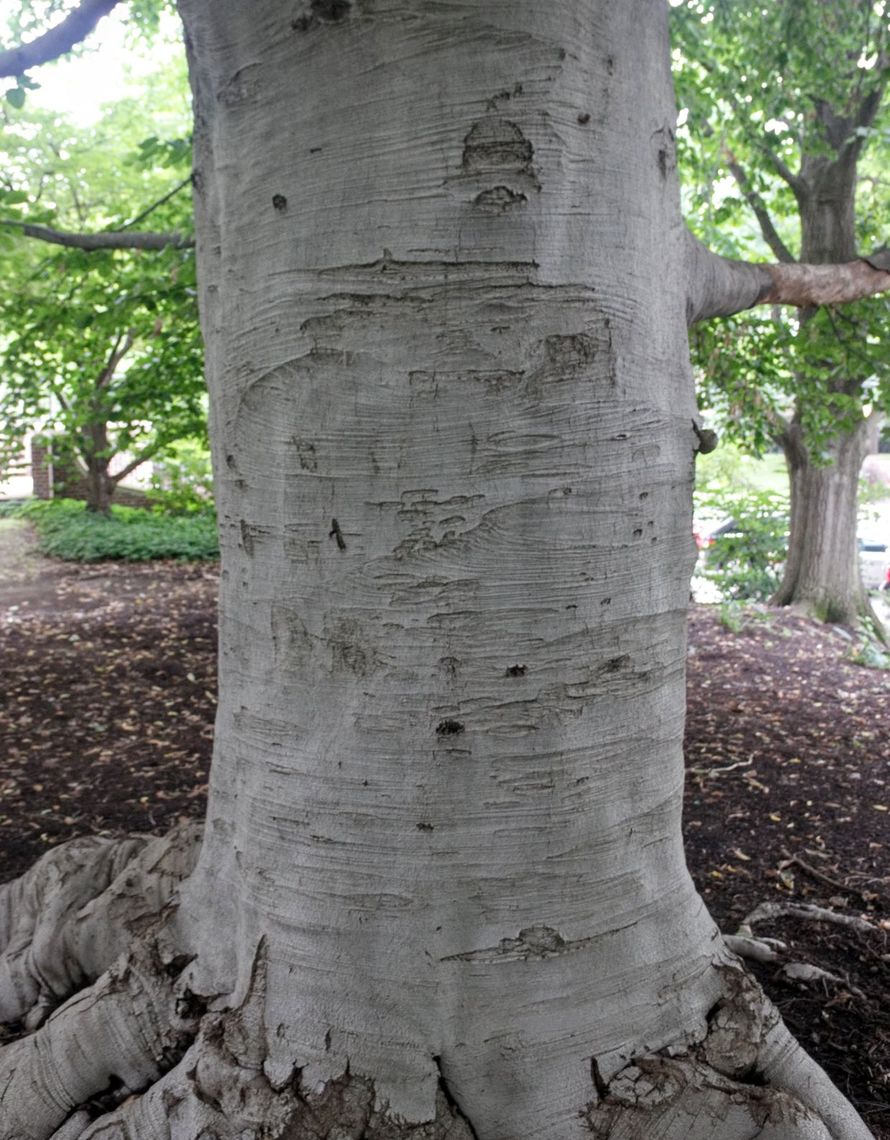European Beech (Fagus sylvatica)
This tree was brought over by European colonists in the mid 1700s and has been a popular ornamental shade tree ever since. The European beech is very similar to the American beech, except that it is slightly smaller and its bark is of a darker gray. This smooth and gray bark visually pops out and is particularly stunning in snowy winter landscapes. The tree's leaves are teardrop shaped and have prominent parallel veins. The tree also produces edible triangular nuts which are encased in a spiky shell. This tree attracts birds and small mammals.
Family: Fagaceae (Beech)
Characteristics: The 2-inch to 4-inch-long leaves are ovate, slightly wavy, and dark green. In the fall, leaves turn a rich russet red or golden-brown. In April-May, small yellow-green flowers begin to bloom. Male flowers are drooping and long-stemmed and female flowers appear as short spikes. The female flowers give way to triangular nuts which are encased by a spiky outer shell. Beechnuts ripen in the fall and are edible. Bark is smooth and gray. This tree is a very dense and low branching and has a pyramidal to oval shape when young, becoming more rounded with age. This tree grows 50-60 feet high and 35-45 feet wide.
Foliage: Deciduous (leaves lost seasonally)
Geographic Origin: Central and southern Europe (non-native)
Cultivation Notes: Requires low maintenance. Does best in full sun to part-shade. Prefers moist and well-drained soil, and is intolerant to wet and poorly drained soils. This tree should be given plenty of space to grow. It may be difficult to transplant.
Number on Campus: 5
Sources: Dirr, Morton Arboretum, Missouri Botanical Garden




